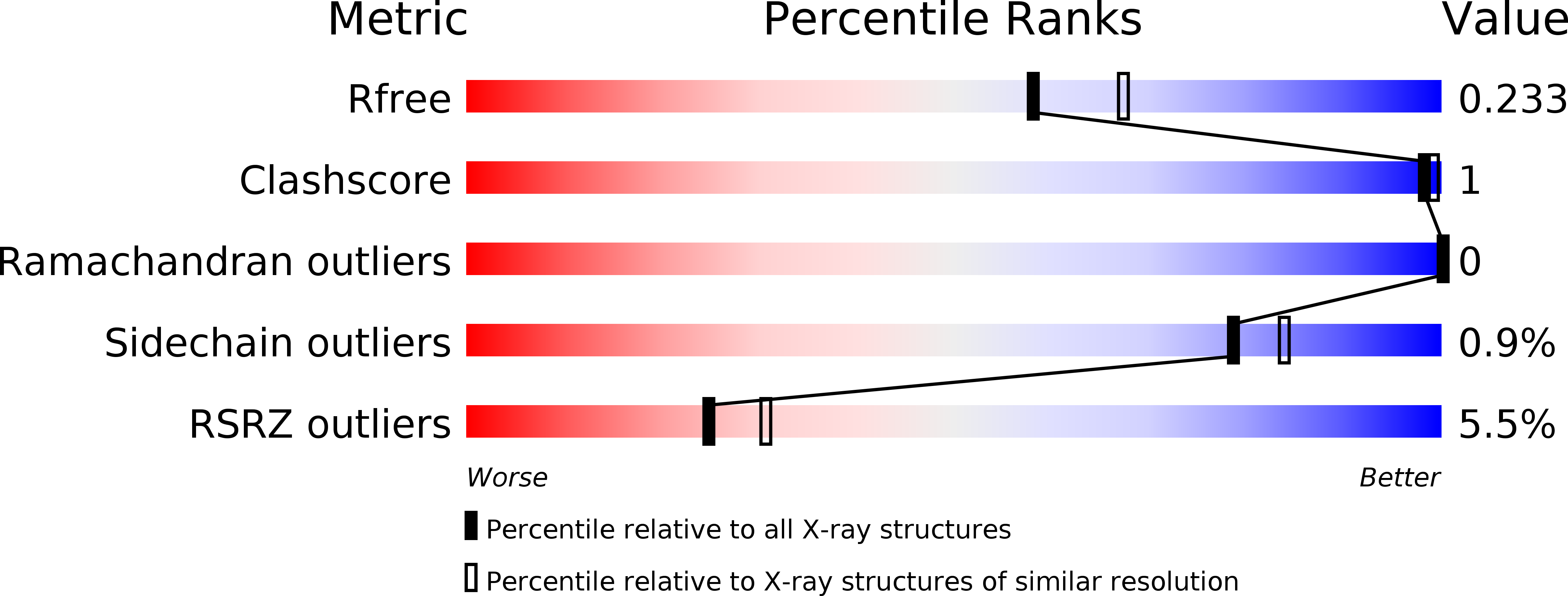
Deposition Date
2017-05-29
Release Date
2017-07-19
Last Version Date
2025-12-10
Entry Detail
PDB ID:
5O4M
Keywords:
Title:
Fresh crystals of HcgC from Methanococcus maripaludis cocrystallized with SAH and pyridinol
Biological Source:
Source Organism:
Methanococcus maripaludis S2 (Taxon ID: 267377)
Host Organism:
Method Details:
Experimental Method:
Resolution:
2.10 Å
R-Value Free:
0.23
R-Value Work:
0.20
R-Value Observed:
0.20
Space Group:
P 1 21 1


